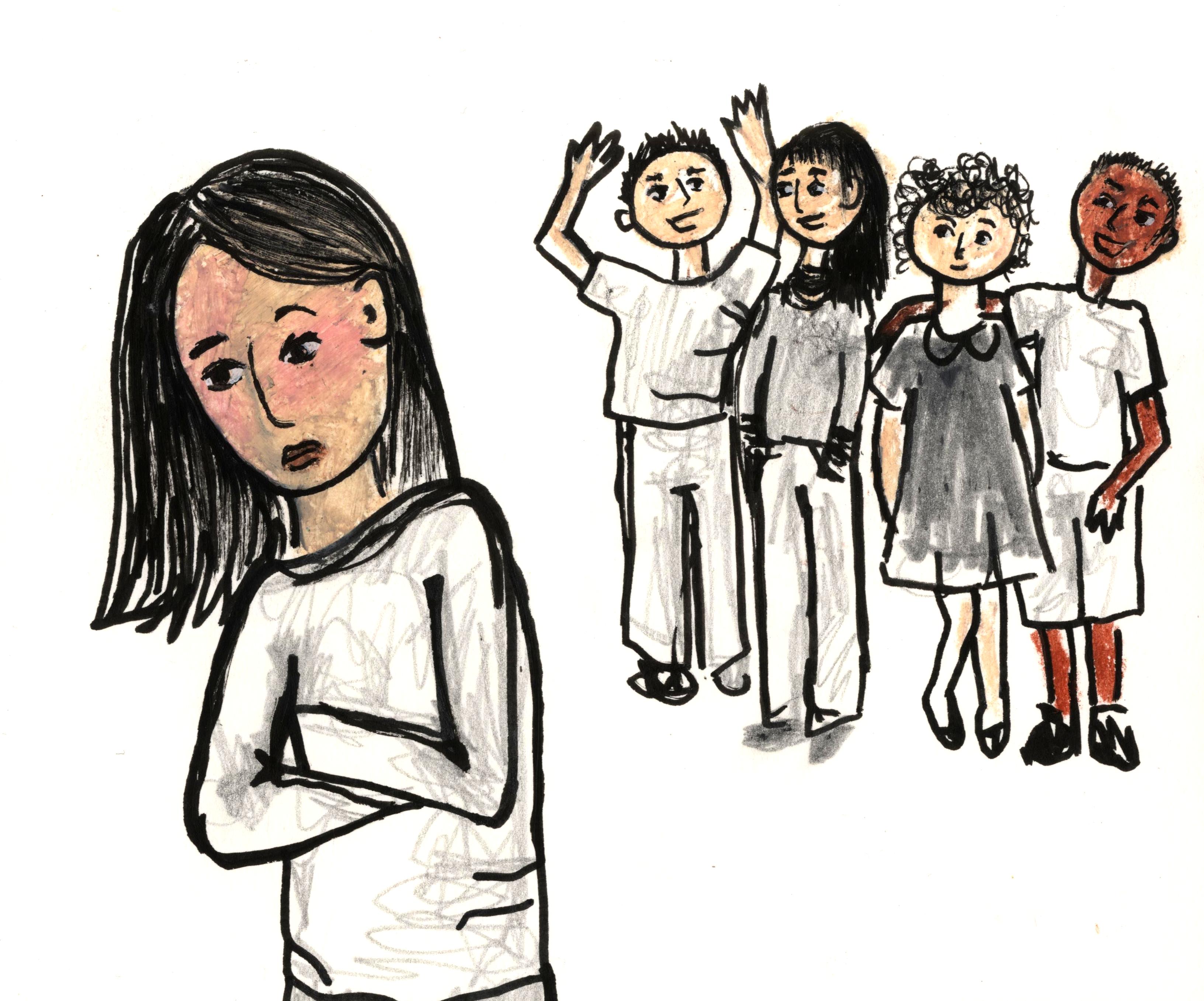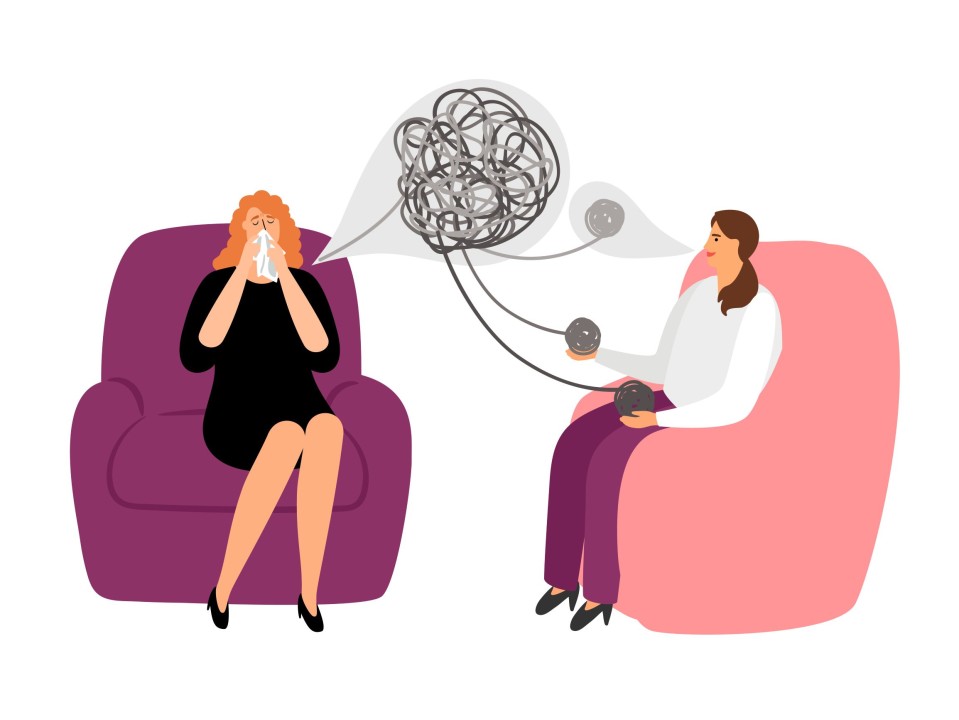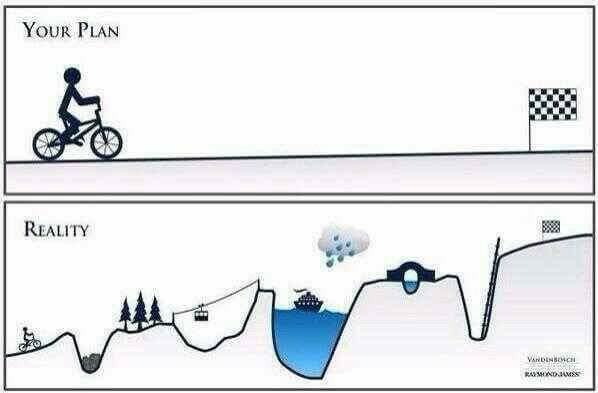How to Relax Your Body and Mind: A Comprehensive Guide
In today’s fast-paced world, stress has become an unwelcome companion for many of us. Whether it’s work deadlines, family responsibilities, or the constant ping of notifications, the pressures of modern life can take a serious toll on our well-being. That’s why learning how to relax your body and mind is not just a luxury it’s a necessity for maintaining good health and happiness.
The Impact of Stress on Your Body and Mind

Before we dive into the nitty-gritty of relaxation techniques, let’s take a moment to understand why stress is such a big deal. Imagine your body as a car engine. A little stress is like revving the engine it can help you perform better in short bursts. But constant stress? That’s like redlining your engine all day, every day. Eventually, something’s going to break down. When stress hits, your body goes into fight-or-flight mode. Your heart races, your muscles tense, and your brain goes on high alert. This response was great for our ancestors when they needed to outrun a saber-toothed tiger, but it’s not so helpful when you’re stuck in traffic or facing a mountain of emails. Chronic stress can lead to a whole host of health problems, including:
- Headaches that feel like a marching band is practicing in your skull
- Muscle tension that makes you feel like you’ve just done a marathon (spoiler: you haven’t)
- Digestive issues that turn your stomach into a war zone
- Sleep problems that leave you staring at the ceiling, counting sheep (and then running out of sheep)
- Mood swings that make you feel like you’re on an emotional roller coaster
But fear not! Learning how to relax your body and mind can help you hit the brakes on stress and cruise towards a calmer, happier you.
How to Relax Your Body: Physical Techniques for Stress Relief
Let’s start with the physical side of relaxation. Your body and mind are interconnected, so relaxing your body can have a powerful effect on your mental state. Here are some tried-and-true techniques to help you unwind physically:
Deep Breathing Exercises: The Power of the Breath
Remember when your mom told you to take a deep breath when you were upset? Turns out, she was onto something. Deep breathing is one of the simplest yet most effective ways to relax your body. Here’s a quick exercise to try:
- Find a comfortable position, either sitting or lying down.
- Place one hand on your chest and the other on your belly.
- Breathe in slowly through your nose, feeling your belly expand.
- Exhale slowly through your mouth, letting your belly fall.
- Repeat for 5-10 breaths.
It might feel a bit awkward at first, like you’re trying to inflate a balloon in your stomach. But with practice, it’ll become second nature. And the best part? You can do this anywhere, anytime even in the middle of a stressful meeting (just try not to make it too obvious, or your colleagues might think you’re practicing for a belching contest).
Progressive Muscle Relaxation: Tension, Be Gone!
Progressive Muscle Relaxation (PMR) is like a full-body massage, but you’re both the masseuse and the client. It involves tensing and then relaxing different muscle groups in your body. This technique not only helps you relax your body but also makes you more aware of physical tension you might be holding onto without realizing it. Here’s how to do it:
- Start with your toes. Curl them tightly for 5 seconds, then release.
- Move up to your calves, thighs, buttocks, stomach, chest, arms, hands, neck, and face.
- For each muscle group, tense for 5 seconds, then relax for 30 seconds.
By the end, you’ll feel like a limp noodle in the best possible way. It’s like hitting the reset button on your body’s tension.
Exercise: Sweat Out the Stress
Exercise might seem counterintuitive when you’re trying to relax, but it’s actually one of the best ways to relax your body and mind. When you exercise, your body releases endorphins those feel-good chemicals that act like nature’s stress busters. You don’t need to train for a marathon or become a gym rat to reap the benefits. Even a brisk 30-minute walk can do wonders for your stress levels. Find an activity you enjoy, whether it’s dancing, swimming, cycling, or even vigorous housecleaning (hey, if you can make chores fun, more power to you!).Remember, the goal is to move your body, not punish it. So if the thought of burpees makes you want to burp (or worse), try something gentler like yoga or tai chi. These practices combine physical movement with mindfulness, giving you a double dose of relaxation.
Massage: The Hands-On Approach to Relaxation
Sometimes, you need a helping hand to relax your body literally. Massage is a fantastic way to ease muscle tension, improve circulation, and promote overall relaxation. Whether you opt for a professional massage or enlist a willing partner, the power of touch can work wonders on your stress levels. If a full-body massage isn’t in the cards, try some self-massage techniques:
- Use your thumbs to massage the base of your skull.
- Rub your temples in small circles.
- Gently massage your jaw (you’d be surprised how much tension we hold here).
- Roll a tennis ball under your feet.
These quick techniques can provide instant relief when you’re feeling tense. Just be careful not to get too into it if you’re in public—people might start to wonder what you’re up to!
Hydrotherapy: Water You Waiting For?
Water has an almost magical ability to soothe and relax your body. Whether it’s a warm bath, a cool shower, or a dip in the pool, water can wash away your stress (if only it could do the same for your to-do list).Try these water-based relaxation techniques:
- Take a warm bath with Epsom salts to ease muscle tension.
- Alternate between hot and cold water in the shower to improve circulation.
- Float in a pool or body of water, letting the buoyancy support your body.
Remember, the goal is to relax, not prune. So don’t stay in too long, or you might emerge looking like a very relaxed raisin.
How to Relax Your Mind: Mental Techniques for Stress Relief

Now that we’ve covered how to relax your body, let’s move on to the mental side of relaxation. After all, a calm body isn’t much use if your mind is still running a mile a minute.
Meditation: Om Your Way to Calm
Meditation is like a gym workout for your mind. It strengthens your ability to focus, increases self-awareness, and helps you relax your mind. And the best part? You don’t need any special equipment or a fancy studio to do it. Here’s a simple meditation technique to try:
- Find a quiet place and sit comfortably.
- Close your eyes and focus on your breath.
- When thoughts come (and they will), acknowledge them and let them go.
- Gently bring your attention back to your breath.
- Start with 5 minutes and gradually increase the time.
At first, your mind might feel like a hyperactive monkey, jumping from thought to thought. That’s normal! The goal isn’t to empty your mind completely (sorry, that’s not really possible unless you’re a zen master or, well, unconscious). The goal is to observe your thoughts without getting caught up in them.With practice, you’ll find it easier to let go of stressful thoughts and relax your mind. And who knows? You might even reach a state of blissful calm where you forget about that embarrassing thing you said at a party five years ago. (We can dream, right?)
Mindfulness: Be Here Now
Mindfulness is like meditation’s cool cousin. It’s all about being fully present in the moment, rather than worrying about the future or dwelling on the past. Practicing mindfulness can help you relax your mind by anchoring you in the here and now.Try this mindfulness exercise:
- Choose an everyday activity, like eating or walking.
- Focus all your attention on the experience.
- Notice the sensations, smells, tastes, and sounds.
- When your mind wanders (and it will), gently bring it back to the present.
For example, when eating, really taste your food. Notice the texture, the flavors, the temperature. It’s amazing how much we miss when we’re scarfing down lunch while scrolling through social media.Mindfulness can turn even the most mundane tasks into opportunities for relaxation. Who knew doing the dishes could be so zen? (Okay, maybe that’s stretching it, but you get the idea.)
Journaling: Write Your Worries Away
Sometimes, the best way to relax your mind is to get all those swirling thoughts out of your head and onto paper. Journaling can be a powerful tool for stress relief and self-reflection.Here are some journaling prompts to get you started:
- What’s the biggest source of stress in my life right now?
- What’s one thing I’m grateful for today?
- If I could change one thing about my day, what would it be?
- What’s a small win I had today?
Don’t worry about perfect grammar or eloquent prose. This isn’t for publication it’s for you. Let your thoughts flow freely, even if they don’t make sense. Sometimes, just the act of writing can help you gain clarity and relax your mind. And hey, if your journal entries read like the ramblings of a mad scientist, that’s okay. At least you’ll have some entertaining reading material for the future!
Positive Self-Talk: Be Your Own Cheerleader
The way we talk to ourselves has a huge impact on our stress levels. Negative self-talk can amp up our anxiety, while positive self-talk can help us relax our minds and face challenges with confidence.Try reframing negative thoughts into positive ones:
- Instead of “I can’t handle this,” try “This is tough, but I’ve got the skills to manage it.”
- Replace “I’m going to fail” with “This is an opportunity to learn and grow.”
- Swap “I’m not good enough” for “I’m doing my best, and that’s enough.”
It might feel a bit cheesy at first, like you’re starring in your own personal motivational poster. But with practice, positive self-talk can become a powerful tool for relaxation and stress management.
Creative Expression: Art for the Soul
Engaging in creative activities can be a fantastic way to relax your mind. Whether it’s painting, writing, music, or crafts, creative expression allows you to enter a state of flow where worries fade into the background. Don’t worry if you’re not the next Picasso or Mozart. The goal isn’t to create a masterpiece it’s to enjoy the process and let your mind relax. So go ahead, finger paint like a kindergartener, write a terrible poem, or belt out off-key karaoke. Your stress levels will thank you (even if your neighbors don’t).
The Benefits of Relaxing Your Body and Mind

Now that we’ve explored various techniques to relax your body and mind, let’s talk about why it’s so important. Relaxation isn’t just about feeling good in the moment (although that’s certainly a nice perk). It has numerous long-term benefits for your physical and mental health.
Physical Health Benefits
When you regularly practice techniques to relax your body and mind, you’re doing your physical health a huge favor. Here are some of the benefits you might experience:
- Lower blood pressure: Relaxation can help keep your blood pressure in check, reducing your risk of heart disease and stroke. It’s like giving your heart a spa day.
- Improved digestion: Stress can wreak havoc on your digestive system. Relaxation techniques can help soothe your gut, potentially reducing symptoms of conditions like irritable bowel syndrome (IBS). Your stomach will thank you for the break from being a stress-induced pretzel.
- Better sleep: When you’re relaxed, you’re more likely to get a good night’s sleep. And we all know how cranky and stressed we can get when we’re sleep-deprived. (If you’ve ever snapped at someone for breathing too loudly after a bad night’s sleep, you know what I’m talking about.)
- Stronger immune system: Chronic stress can weaken your immune system, making you more susceptible to illnesses. Regular relaxation can help boost your body’s defenses. It’s like giving your immune system a superhero cape.
- Reduced muscle tension: Relaxation techniques can help ease muscle tension, potentially reducing aches and pains. You might find yourself moving with the grace of a yoga master instead of the stiffness of a rusty robot.
Mental Health Benefits
The benefits of learning how to relax your body and mind extend far beyond the physical. Here are some ways relaxation can boost your mental health:
- Reduced anxiety and depression: Regular relaxation practices can help alleviate symptoms of anxiety and depression. It’s like giving your brain a chill pill, minus the actual pill.
- Improved mood: When you’re relaxed, you’re more likely to experience positive emotions. You might find yourself smiling at strangers or actually enjoying your commute. (Okay, maybe that’s a stretch, but you get the idea.)
- Better focus and concentration: A relaxed mind is a focused mind. You might find it easier to concentrate on tasks and be more productive. It’s like upgrading your brain’s operating system.
- Increased self-awareness: Many relaxation techniques, like meditation and mindfulness, can increase your self-awareness. You might start to notice patterns in your thoughts and behaviors, giving you more control over your reactions to stress.
- Enhanced creativity: When your mind is relaxed, you’re more open to new ideas and creative solutions. Who knows? You might come up with the next big invention while you’re in a state of zen.
When to Seek Professional Help
While learning how to relax your body and mind can be incredibly beneficial, there are times when you might need a little extra help. If you’re finding it difficult to manage your stress levels despite trying various relaxation techniques, it might be time to seek professional help.Here are some signs that it might be time to talk to a mental health professional:
- Your stress is interfering with your daily life, work, or relationships.
- You’re experiencing physical symptoms of stress that don’t improve with relaxation techniques.
- You’re using alcohol, drugs, or other unhealthy coping mechanisms to deal with stress.
- You’re experiencing symptoms of anxiety or depression that don’t improve with self-help strategies.
- You’re having thoughts of self-harm or suicide.
Remember, seeking help is a sign of strength, not weakness. Mental health professionals have a whole toolbox of strategies to help you manage stress and improve your overall well-being. They can provide personalized advice and support tailored to your specific situation.And hey, talking to a therapist is like having a personal trainer for your mind. They can help you build those mental muscles and become a relaxation superhero!
Creating a Relaxation Routine: Putting It All Together
Now that you’ve got a whole arsenal of techniques to relax your body and mind, it’s time to put them into practice. Creating a relaxation routine can help you make relaxation a regular part of your life, rather than something you only do when you’re stressed to the max.Here’s a sample relaxation routine to get you started:
- Morning: Start your day with 5 minutes of deep breathing or meditation. It’s like a cup of calm to go with your morning coffee.
- Mid-morning: Take a quick break for some desk stretches or a short walk. Your body will thank you for the movement, and your mind will appreciate the change of scenery.
- Lunchtime: Practice mindful eating. Really savor your food instead of inhaling it while scrolling through your phone.
- Afternoon: Do a quick progressive muscle relaxation exercise. It’s like hitting the reset button on your body’s tension.
- Evening: Engage in a creative activity or journaling session. Let your mind unwind from the day’s stresses.
- Before bed: Take a warm bath or do some gentle yoga to prepare your body and mind for sleep.
Remember, this is just a suggestion. The best relaxation routine is one that works for you and fits into your lifestyle. Maybe you’re a night owl who prefers to meditate at midnight, or perhaps you like to start your day with a vigorous workout to blow off steam. The key is consistency and finding what helps you relax your body and mind most effectively.
Relaxation in the Real World: Practical Tips

Let’s face it: life doesn’t always cooperate with our plans to relax. Sometimes, you need to relax your body and mind in less-than-ideal circumstances. Here are some practical tips for finding relaxation in the real world:
At Work
Take micro-breaks: Even 30 seconds of deep breathing can help reset your stress levels.
Use your lunch break wisely: Instead of working through lunch, eat at your desk. Take a real break, even if it’s just 15 minutes. Go for a walk, find a quiet spot to meditate, or chat with a coworker about something non-work-related.
Create a calming workspace: Add plants, photos, or other items that make you feel relaxed. Just don’t go overboard you don’t want your desk to look like a tropical resort (tempting as that may be).
Practice desk yoga: Simple stretches and movements can help you relax your body without leaving your chair. Just be prepared for some strange looks from your coworkers.
In Public
Use your phone for good: Instead of doom-scrolling, use a relaxation app or listen to calming music.
Find a quiet spot: Even in busy places, you can often find a corner to practice some deep breathing or quick meditation.
Use visualization: Close your eyes and imagine a peaceful place. It’s like a mini-vacation for your mind.
At Home
Create a relaxation space: Designate an area in your home specifically for relaxation. It could be a cozy corner with a comfy chair or a spot in your garden.
Set boundaries: Learn to say no to unnecessary commitments. Your time to relax your body and mind is important.
Establish a bedtime routine: Wind down with relaxing activities before bed. Reading, gentle stretching, or listening to soothing music can help prepare your body and mind for sleep.
Overcoming Obstacles to Relaxation
Even when we know how to relax our body and mind, sometimes obstacles get in the way. Here are some common hurdles and how to overcome them:
“I don’t have time to relax”
This is probably the most common excuse we tell ourselves. But here’s the thing: relaxation doesn’t have to take hours. Even a few minutes of deep breathing or mindfulness can make a difference. Think of relaxation as an investment in your productivity and well-being. The time you spend relaxing can actually save you time in the long run by making you more focused and efficient.Try this: Set a relaxation alarm. When it goes off, take a 2-minute break to practice a quick relaxation technique. It’s amazing what even these short breaks can do.
“I can’t stop my thoughts”
If you’ve ever tried to meditate, you might have felt frustrated by the constant chatter in your mind. Remember, the goal isn’t to stop your thoughts completely (that’s impossible unless you’re, well, not alive). The goal is to observe your thoughts without getting caught up in them.Try this: Instead of trying to stop your thoughts, imagine them as clouds passing across the sky of your mind. Acknowledge them, then let them drift away.
“Relaxation techniques don’t work for me”
If you’ve tried a few techniques and haven’t found success, don’t give up! Everyone is different, and what works for one person might not work for another. The key is to keep experimenting until you find what helps you relax your body and mind.Try this: Keep a relaxation journal. Note which techniques you try and how they make you feel. Over time, you’ll start to see patterns of what works best for you.
“I feel guilty when I relax”
In our productivity-obsessed culture, it’s easy to feel guilty about taking time to relax. But remember, relaxation isn’t laziness it’s a crucial part of maintaining your health and productivity. Try this: Reframe relaxation as “recharging” or “maintenance.” Just like you wouldn’t feel guilty about charging your phone or getting your car serviced, you shouldn’t feel guilty about maintaining your most important asset: yourself.
The Role of Diet in Relaxation
You might be wondering what food has to do with learning how to relax your body and mind. Well, it turns out, quite a lot! What you eat can have a significant impact on your stress levels and ability to relax.
Foods That Help You Relax
Certain foods can actually help promote relaxation:
Complex carbohydrates: Foods like whole grains, oatmeal, and sweet potatoes can increase the production of serotonin, a feel-good chemical in the brain.
Foods high in magnesium: Leafy greens, nuts, and seeds can help regulate neurotransmitters that reduce stress.
Fatty fish: The omega-3 fatty acids in fish like salmon and tuna can help reduce stress hormones.
Dark chocolate: In moderation, dark chocolate can lower stress hormones and improve mood.
Warm milk: The combination of calcium and the psychological comfort of a warm drink can be very soothing.
Foods to Avoid
On the flip side, some foods can make it harder to relax:
Caffeine: While that cup of coffee might give you a needed boost in the morning, too much caffeine can increase anxiety and make it harder to relax.
Alcohol: Although it might make you feel relaxed initially, alcohol can disrupt your sleep patterns and increase anxiety over time.
Sugary foods: The quick energy spike from sugary foods is often followed by a crash that can leave you feeling irritable and stressed.
Processed foods: Many processed foods are high in unhealthy fats and sugars, which can negatively impact your mood and energy levels.
Remember, the goal isn’t to completely eliminate these foods (where’s the fun in that?), but to be mindful of how they affect your ability to relax. Maybe swap that afternoon coffee for a calming herbal tea, or reach for a piece of dark chocolate instead of a sugary snack when you’re feeling stressed.
The Power of Social Connection in Relaxation
While many relaxation techniques focus on solitary practices, the power of social connection in helping us relax our body and mind shouldn’t be underestimated. Humans are social creatures, and positive social interactions can have a profound effect on our stress levels.
The Science of Social Connection
Research has shown that social support can actually change our physiological responses to stress. When we’re in the presence of supportive friends or loved ones, our bodies release oxytocin, often called the “cuddle hormone.” This hormone can help lower cortisol levels and blood pressure, promoting a sense of calm and well-being.
Ways to Harness Social Connection for Relaxation
Here are some ways you can use social connections to help you relax:
Schedule regular catch-ups with friends: Even a quick coffee date or phone call can boost your mood and help you unwind.
Join a club or group: Engaging in a shared interest with others can be a great way to relax and forget about your stressors for a while.
Practice relaxation techniques with others: Join a yoga class, meditation group, or find a workout buddy. Having someone to share the experience with can make it more enjoyable and help you stick to it.
Volunteer: Helping others can give you a sense of purpose and perspective, which can be incredibly relaxing.
Cuddle with a loved one or pet: Physical touch releases oxytocin, promoting feelings of bonding and relaxation.
Remember, it’s not about the quantity of social connections, but the quality. A few close, supportive relationships can do wonders for your ability to relax and manage stress.
Technology and Relaxation: Friend or Foe?
In our digital age, technology plays a significant role in our lives including our efforts to relax our body and mind. But is technology a help or a hindrance when it comes to relaxation? The answer, as with many things, is: it depends on how you use it.
The Downsides of Technology
Let’s face it, technology can be a major source of stress:
Constant connectivity: The ability to be reached 24/7 can make it hard to truly relax and disconnect.
Information overload: The constant stream of news and information can be overwhelming and anxiety-inducing.
Social media comparison: Scrolling through carefully curated highlight reels of others’ lives can leave us feeling inadequate and stressed.
Blue light exposure: The blue light emitted by screens can disrupt our sleep patterns, making it harder to relax and recharge.
The Upsides of Technology
However, when used mindfully, technology can also be a powerful tool for relaxation:
Relaxation apps: There are countless apps designed to guide you through meditation, breathing exercises, and other relaxation techniques.
Nature sounds and white noise: Apps and websites can provide soothing background sounds to help you relax.
Online yoga and exercise classes: Technology can give you access to expert-led relaxation and exercise sessions from the comfort of your home.
Wearable devices: Some smartwatches and fitness trackers can monitor your stress levels and remind you to take relaxation breaks.
Virtual reality: VR technology can transport you to calming environments, providing an immersive relaxation experience.
Finding the Right Balance
The key is to use technology intentionally as a tool for relaxation, rather than letting it become a source of stress. Here are some tips:
Set boundaries: Designate tech-free times and spaces in your life.
Use apps mindfully: Choose relaxation apps that work for you and use them regularly.
Practice digital detoxes: Periodically unplug from technology to reset and recharge.
Be selective with social media: Curate your feeds to include more positive, relaxing content.
Remember, technology should enhance your relaxation efforts, not detract from them. If you find that certain tech habits are increasing your stress levels, it might be time to reevaluate and adjust.
Relaxation for Different Life Stages
Learning how to relax your body and mind is a lifelong journey, and the techniques that work best for you might change as you move through different life stages. Let’s explore how relaxation needs and strategies might evolve over time.
Relaxation for Children and Teens
Children and teenagers face unique stressors, from school pressures to social dynamics. Teaching relaxation techniques early can set the foundation for lifelong stress management skills.For children:
Guided imagery: Encourage them to imagine a happy, peaceful place.
Simple breathing exercises: Teach them to take deep breaths when feeling overwhelmed.
Physical activities: Dancing, running, or playing can be great stress relievers for kids.
For teens:
Mindfulness apps: Many teens respond well to tech-based relaxation tools.
Journaling: Writing can be a powerful way for teens to process emotions and relax.
Music: Listening to or creating music can be a great outlet for teenage stress.
Relaxation for Adults
Adults often juggle multiple responsibilities, from career pressures to family obligations. Finding time to relax can be challenging but crucial.
Time management: Learning to prioritize and say no can create more space for relaxation.
Mindfulness at work: Incorporating short mindfulness breaks into the workday can help manage stress.
Exercise: Regular physical activity can be a powerful stress-buster for busy adults.
Relaxation for Seniors
As we age, we may face new challenges like health concerns or lifestyle changes. Relaxation techniques can help manage these stressors and improve overall well-being.
Gentle yoga or tai chi: These practices combine physical movement with mindfulness, perfect for older adults.
Social activities: Engaging with friends and community can be very relaxing for seniors.
Nature therapy: Spending time outdoors can be particularly beneficial for older adults.
Remember, there’s no one-size-fits-all approach to relaxation. What works best will depend on your individual needs, preferences, and life circumstances. The key is to keep exploring and adapting your relaxation strategies as you move through life.
The Future of Relaxation: Emerging Trends and Research
As our understanding of stress and relaxation deepens, new techniques and technologies are constantly emerging to help us relax our body and mind. Let’s take a look at some exciting developments in the field of relaxation:
Virtual Reality (VR) for Relaxation
VR technology is opening up new possibilities for immersive relaxation experiences. Imagine being able to transport yourself to a peaceful beach or serene forest with the click of a button. Research is showing promising results for VR-based relaxation techniques in reducing stress and anxiety.
Neurofeedback
This technique involves monitoring brain activity in real-time and providing feedback to help individuals learn to control their brain states. It’s being explored as a tool to help people achieve deeper states of relaxation and manage stress more effectively.
Personalized Relaxation Plans
As we learn more about individual differences in stress responses, there’s a growing trend towards personalized relaxation strategies. In the future, we might see relaxation plans tailored to our unique physiological responses, personality traits, and lifestyle factors.
Mindfulness-Based Digital Therapeutics
These are digital health products that incorporate mindfulness and relaxation techniques to treat specific health conditions. They’re being developed and tested for conditions ranging from anxiety and depression to chronic pain.
Eco-Therapy
Also known as nature therapy, this approach emphasizes the relaxation benefits of connecting with nature. As urbanization increases, we’re likely to see more innovative ways of bringing nature into our daily lives for stress relief.
Workplace Wellness Programs
Companies are increasingly recognizing the importance of employee well-being. We’re likely to see more comprehensive workplace programs that incorporate relaxation techniques into the daily work routine.
Sleep Technology
As we better understand the crucial role of sleep in stress management, we’re seeing an explosion of sleep-related relaxation technologies. From smart mattresses to AI-powered sleep coaching, these innovations aim to help us relax and get better quality sleep. While these emerging trends are exciting, it’s important to remember that the foundations of relaxation breathing, mindfulness, physical activity remain as relevant as ever. The key is to stay curious, keep exploring, and find the relaxation strategies that work best for you.
Conclusion: Your Journey to Relaxation
Congratulations! You’ve made it to the end of our comprehensive guide on how to relax your body and mind. By now, you should have a toolbox full of techniques to help you combat stress and find your zen, even in the chaos of modern life. Remember, learning to relax is a journey, not a destination. It’s a skill that you’ll continue to develop and refine throughout your life. Some days, you’ll feel like a relaxation guru, floating through life on a cloud of calm. Other days, you might feel like a stressed-out squirrel on caffeine. And you know what? That’s okay. The key is to be patient with yourself and keep practicing. Try different techniques, mix and match, and find what works best for you. Maybe you’ll discover that you’re a meditation master, or perhaps you’ll find your bliss in a high-energy dance class. There’s no right or wrong way to relax as long as it helps you feel calmer and more centered, you’re on the right track. As you continue on your relaxation journey, keep these final thoughts in mind:
Consistency is key: Regular practice of relaxation techniques can help you build resilience to stress over time.
Be flexible: What helps you relax might change depending on the situation, your mood, or even the time of day. Stay open to trying new things.
Make it a priority: In our busy lives, it’s easy to put relaxation on the back burner. Remember, taking time to relax isn’t selfish it’s essential for your health and well-being.
Share the love: As you discover relaxation techniques that work for you, share them with friends and family. Spreading calm can create a ripple effect of positivity.
Keep learning: Stay curious about new relaxation techniques and research. The field of stress management is always evolving, and you never know when you might discover a new favorite way to unwind.
So, take a deep breath, shake out any tension you’re holding, and give yourself a pat on the back. You’re now equipped with the knowledge and tools to relax your body and mind like a pro. Here’s to a calmer, more relaxed you!
























































:max_bytes(150000):strip_icc()/time-in-nature-fb300e6bfbdf412f9f8df3ee91862689.jpg)




























:max_bytes(150000):strip_icc()/treat-yourself-logo-0caca0790cf14f1ebf8f7b81ed7b5ac2.jpg)








